Abstract
Two avoidance-conditioning experiments in which responding delayed shocks are reported. Rats receiving an average of two shocks per minute (imposed condition) could produce, by pressing a bar, a 3-min alternate condition. Six (Experiment I) or more (Experiment II) shocks occurred in the alternate condition. All shocks in the alternate condition were delayed and delivered at 1-sec intervals. With long delays, all subjects produced the alternate condition and spent a large percentage of each session in the alternate condition. The first experiment demonstrated that the longer the delay from onset of the alternate condition to onset of the shocks, the more session time spent in the alternate condition. The second experiment indicated that despite increased shock frequency, behavior is acquired and maintained when responding leads to sufficient delay. Individual subjects produced the alternate condition by bar pressing in essentially one of two patterns. One pattern, termed postshock, involved bar pressing immediately after shock; the other, termed posttransition, involved responding immediately after the transition from the alternate to the imposed condition. These results indicate that shock-frequency reduction is not necessary for avoidance conditioning; delay to shock onset is sufficient.
Keywords: aversive control, avoidance, delayed shock, shock frequency, rats
Full text
PDF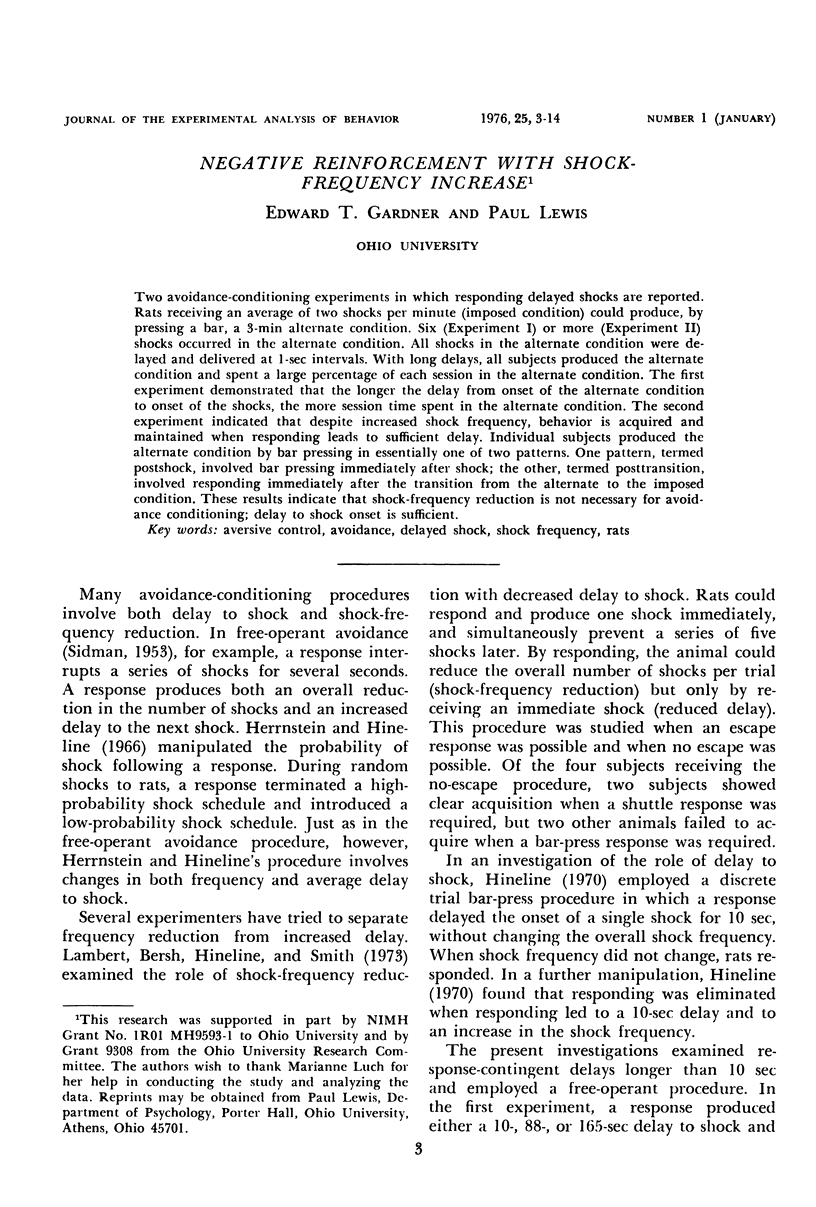
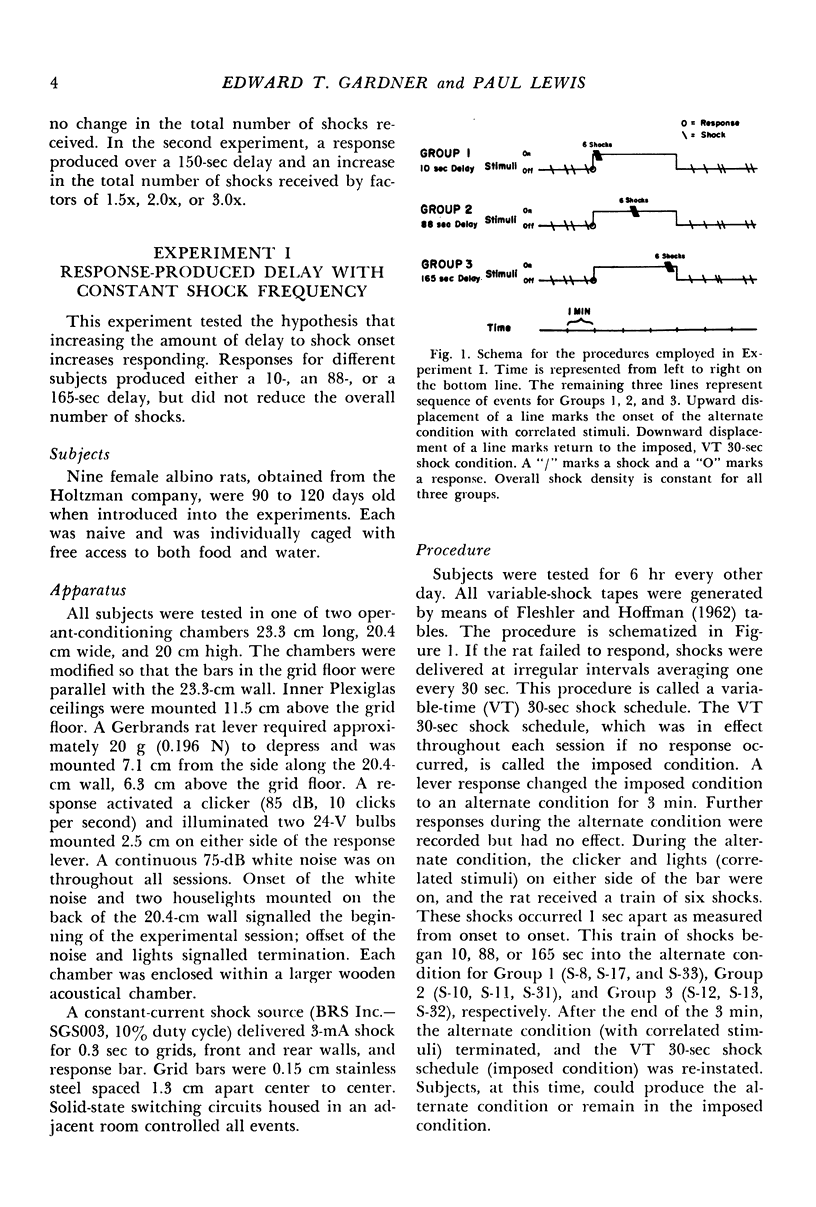
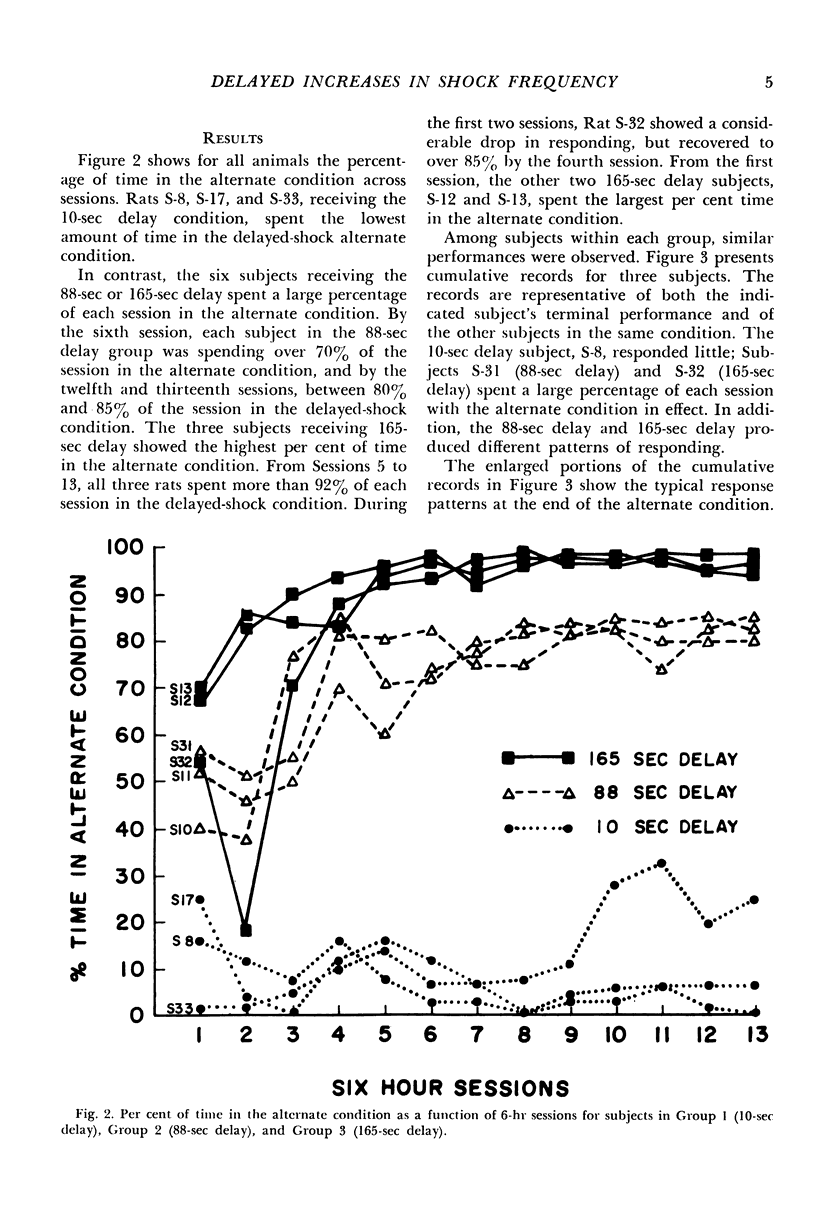

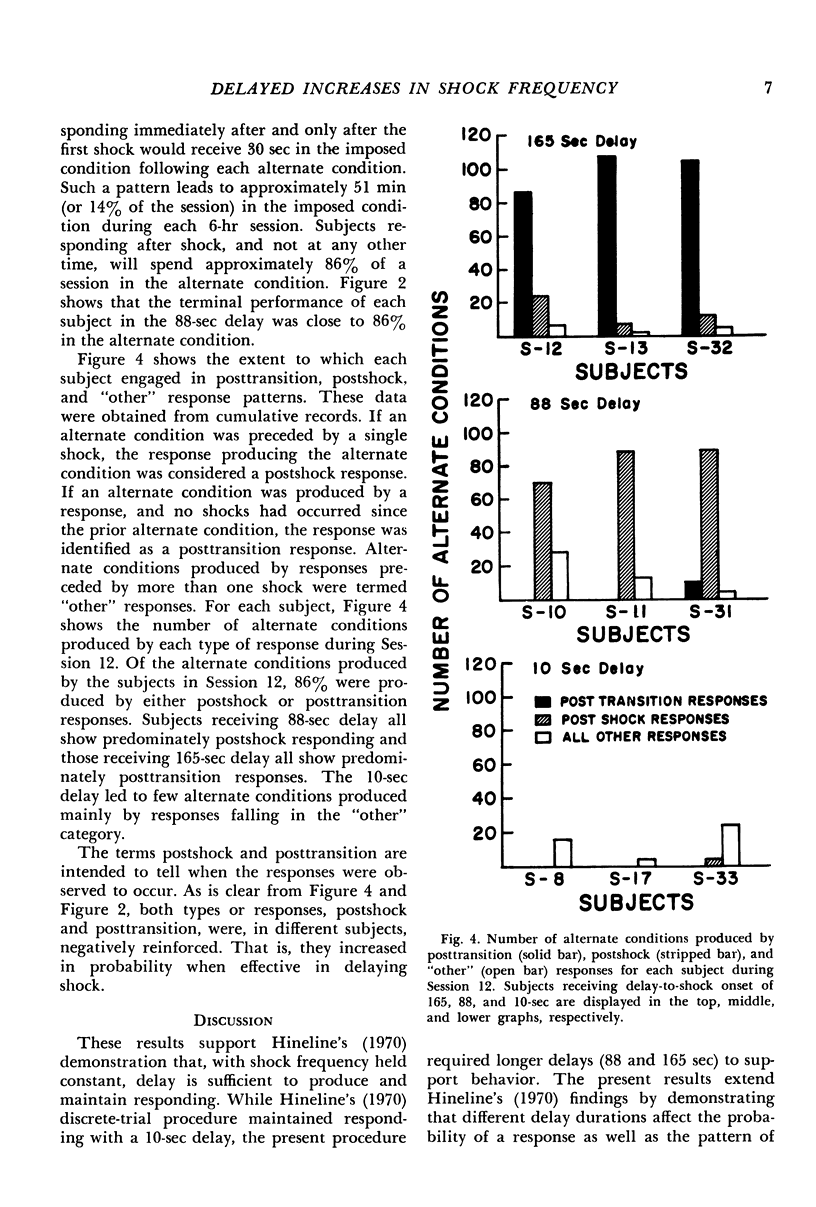



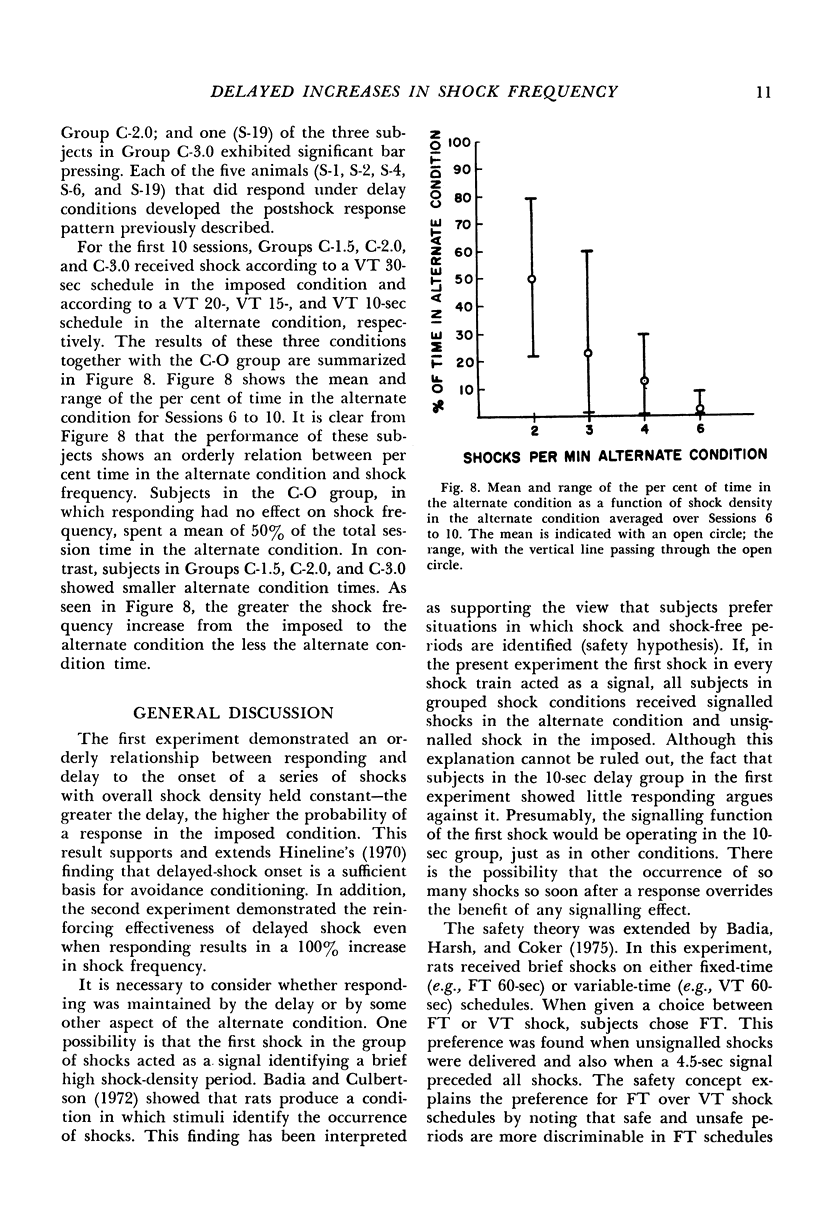
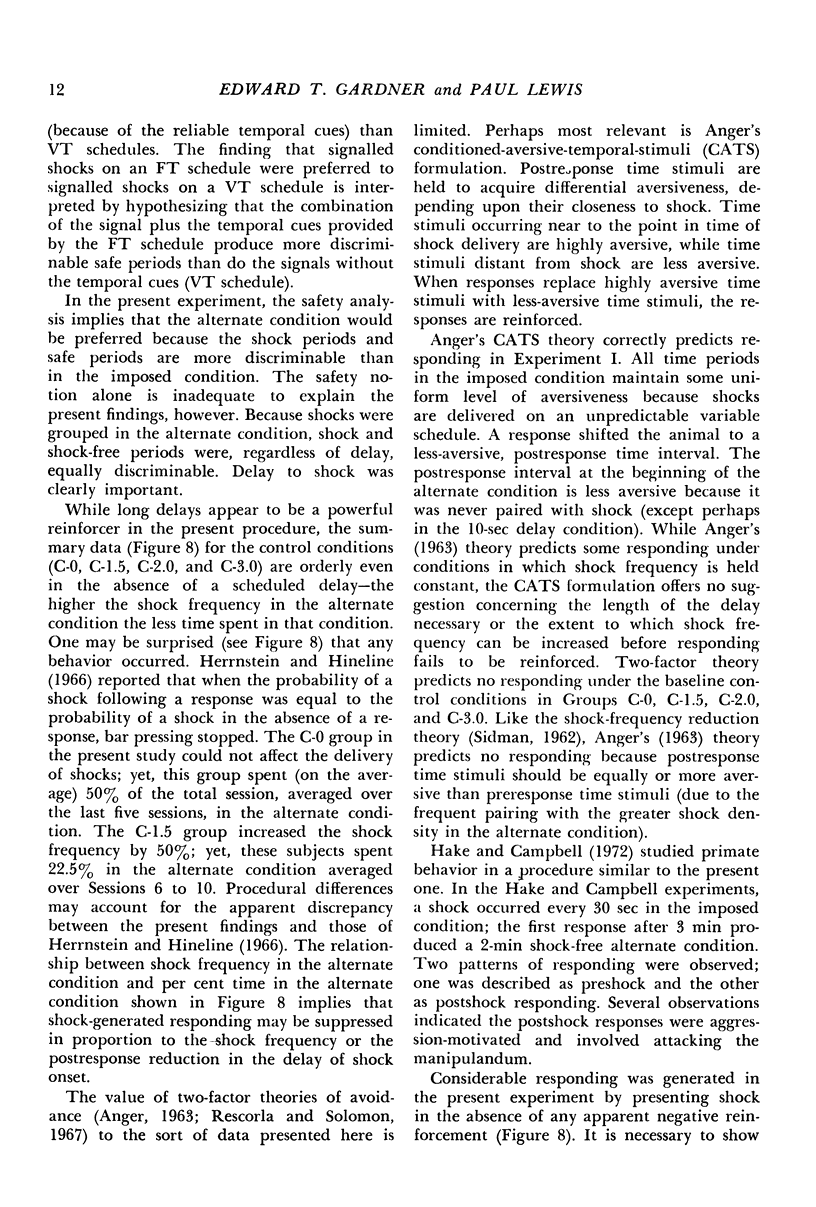
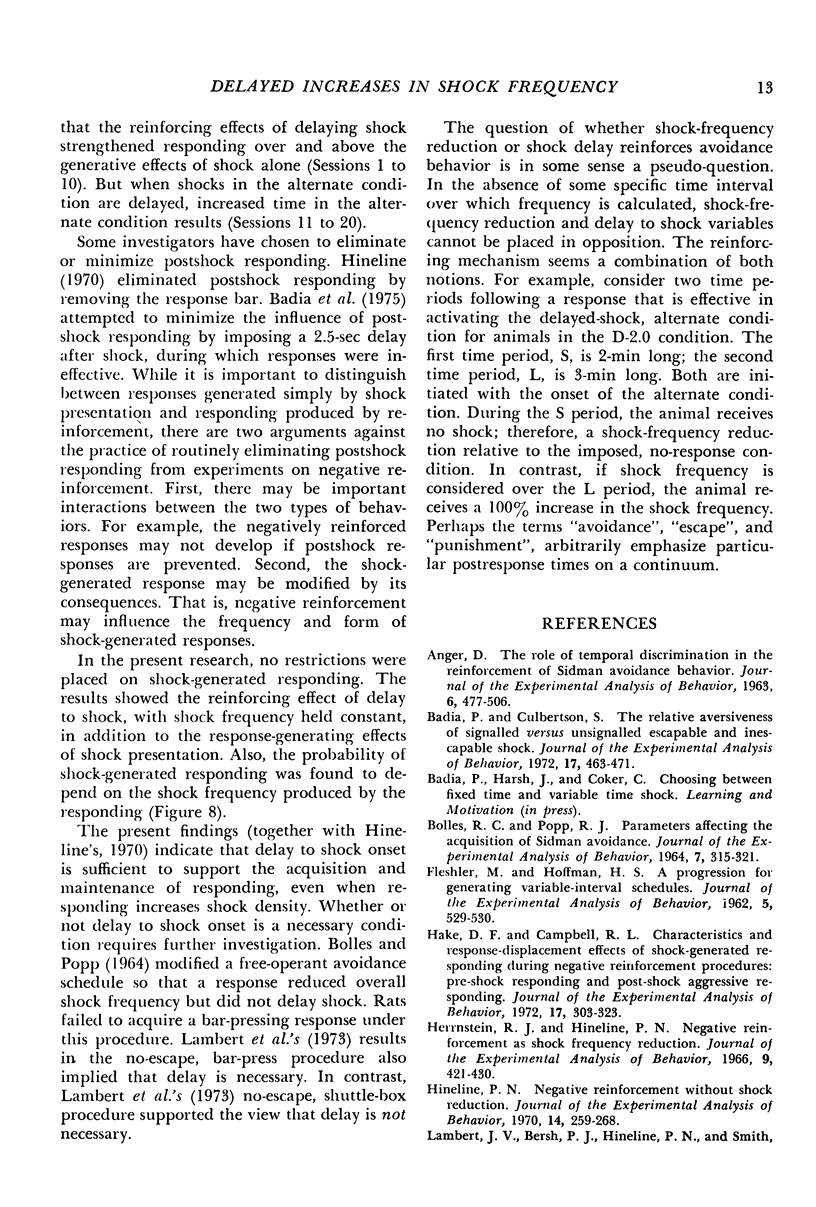

Selected References
These references are in PubMed. This may not be the complete list of references from this article.
- ANGER D. The role of temporal discriminations in the reinforcement of Sidman avoidance behavior. J Exp Anal Behav. 1963 Jul;6(3):477–506. doi: 10.1901/jeab.1963.6-s477. [DOI] [PMC free article] [PubMed] [Google Scholar]
- Badia P., Culbertson S. The relative aversiveness of signalled vs unsignalled escapable and inescapable shock. J Exp Anal Behav. 1972 May;17(3):463–471. doi: 10.1901/jeab.1972.17-463. [DOI] [PMC free article] [PubMed] [Google Scholar]
- Hake D. F., Campbell R. L. Characteristics and response-displacement effects of shock-generated responding during negative reinforcement procedures: pre-shock responding and post-shock aggressive responding. J Exp Anal Behav. 1972 May;17(3):303–323. doi: 10.1901/jeab.1972.17-303. [DOI] [PMC free article] [PubMed] [Google Scholar]
- Herrnstein R. J., Hineline P. N. Negative reinforcement as shock-frequency reduction. J Exp Anal Behav. 1966 Jul;9(4):421–430. doi: 10.1901/jeab.1966.9-421. [DOI] [PMC free article] [PubMed] [Google Scholar]
- Hineline P. N. Negative reinforcement without shock reduction. J Exp Anal Behav. 1970 Nov;14(3):259–268. doi: 10.1901/jeab.1970.14-259. [DOI] [PMC free article] [PubMed] [Google Scholar]
- Lambert J. V., Bersh P. J., Hineline P. N., Smith G. D. Avoidance conditioning with shock contingent upon the avoidance response. J Exp Anal Behav. 1973 Mar;19(2):361–367. doi: 10.1901/jeab.1973.19-361. [DOI] [PMC free article] [PubMed] [Google Scholar]
- Rescorla R. A., Solomon R. L. Two-process learning theory: Relationships between Pavlovian conditioning and instrumental learning. Psychol Rev. 1967 May;74(3):151–182. doi: 10.1037/h0024475. [DOI] [PubMed] [Google Scholar]
- SIDMAN M. Avoidance conditioning with brief shock and no exteroceptive warning signal. Science. 1953 Aug 7;118(3058):157–158. doi: 10.1126/science.118.3058.157. [DOI] [PubMed] [Google Scholar]
- SIDMAN M. Reduction of shock frequency as reinforcement for avoidance behavior. J Exp Anal Behav. 1962 Apr;5:247–257. doi: 10.1901/jeab.1962.5-247. [DOI] [PMC free article] [PubMed] [Google Scholar]


